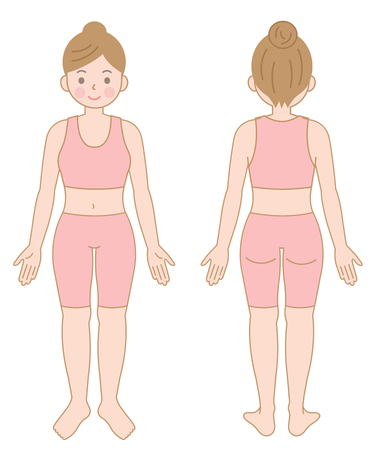Understanding Heart Health and Exercise
When it comes to keeping your heart in good shape, understanding the basics of cardiovascular health is key. In the United States, heart disease remains a leading cause of death, but the good news is that regular exercise can make a significant difference in both preventing and managing heart-related conditions. Let’s break down what heart health means and why physical activity plays such an important role.
What Is Cardiovascular Health?
Cardiovascular health refers to how well your heart and blood vessels are functioning. A healthy heart efficiently pumps blood throughout your body, delivering oxygen and nutrients to all your organs and tissues. When your cardiovascular system is in good condition, you’re less likely to develop problems like high blood pressure, coronary artery disease, or stroke.
Key Risk Factors for Heart Disease (Common in the U.S.)
| Risk Factor | Description |
|---|---|
| High Blood Pressure (Hypertension) | Often called “the silent killer,” high blood pressure increases the workload on your heart and arteries. |
| High Cholesterol | Too much LDL (“bad”) cholesterol can clog arteries and restrict blood flow. |
| Poor Diet | Diets high in saturated fats, sodium, and added sugars raise risk. |
| Physical Inactivity | Lack of regular movement weakens the heart muscle over time. |
| Smoking | Tobacco use damages blood vessels and increases clot risk. |
| Obesity | Extra weight strains the cardiovascular system. |
| Diabetes | High blood sugar can harm arteries and nerves that control the heart. |
The Critical Role of Exercise in Heart Health
Exercise isn’t just for athletes—it’s one of the best things anyone can do for their heart. The American Heart Association recommends at least 150 minutes of moderate-intensity aerobic activity each week, like brisk walking or cycling. Physical activity helps lower blood pressure, improves cholesterol levels, reduces body fat, and boosts overall mood and energy levels.
How Exercise Helps Your Heart (U.S. Perspective)
- Lowers “bad” LDL cholesterol and raises “good” HDL cholesterol
- Reduces risk of type 2 diabetes by improving insulin sensitivity
- Lowers resting heart rate and blood pressure over time
- Strengthens the heart muscle so it works more efficiently with less effort
- Aids in weight management, which is a major factor in U.S. heart health statistics
- Cuts down on stress—another hidden risk factor for Americans’ hearts
Types of Exercise Most Recommended for Heart Health
| Type of Exercise | Examples (Popular in the U.S.) | Main Benefits for Heart Health |
|---|---|---|
| Aerobic/Cardio | Walking, jogging, swimming, biking, dance classes (like Zumba) | Improves circulation, lowers blood pressure & cholesterol, strengthens heart muscle |
| Strength Training (Resistance) | Lifting weights, resistance bands, bodyweight exercises (push-ups, squats) | Lowers fat mass, builds lean muscle to support metabolism & glucose control |
| Flexibility & Balance Activities | Yoga, stretching routines, Tai Chi classes at local community centers or gyms | Aids mobility and can reduce injury risk during other activities; supports overall wellness goals common in American lifestyle programs |
2. Assessment and Goal Setting
Why Start with Assessment?
Before starting any exercise program for heart health, it’s important to assess your current health status and risks. A good assessment helps create a safe and effective plan that matches your unique needs and American lifestyle. Assessments also help track progress and keep you motivated.
Recommended Screening Tools
Healthcare professionals in the U.S. use several screening tools to check heart health and physical readiness. Here are some commonly recommended ones:
| Screening Tool | Purpose | Who Should Use It? |
|---|---|---|
| PAR-Q+ (Physical Activity Readiness Questionnaire) | Screens for safety before starting physical activity | Anyone beginning an exercise program |
| Framingham Risk Score | Estimates 10-year risk of heart disease | Adults over 20, especially those with risk factors |
| AHA/ACC Risk Calculator | Assesses risk for heart attack or stroke | Adults aged 40–79 years old |
| BMI & Waist Circumference Measurement | Evaluates obesity-related heart risks | All adults, especially with sedentary lifestyles |
| Resting Blood Pressure Check | Screens for hypertension | All adults, particularly those with family history of high blood pressure |
Risk Assessment: Understanding Your Heart Health Risks
After screening, risk assessment is key. This involves looking at personal and family medical history, lifestyle habits (like smoking, diet, and activity), and the results from screening tools. This helps identify if you need extra precautions or a referral to a healthcare provider before starting an exercise program.
Main Risk Factors to Consider:
- Age (men over 45, women over 55)
- Family history of heart disease
- Smoking status
- High blood pressure or cholesterol levels
- Lack of regular physical activity
- Poor diet (high in saturated fats, sodium, processed foods)
- Obesity or overweight status
- Diabetes or prediabetes diagnosis
- Stress levels and sleep quality
Practical Strategies for Setting Realistic, Culturally Appropriate Goals
The best exercise goals are personal, realistic, and fit into your daily American life. Here’s how to set them:
Goal Setting Table: SMART Goals for Heart Health in the U.S.
| Element of SMART Goal | Description & Example (American Context) |
|---|---|
| Specific | “I will walk after dinner for 30 minutes.” |
| Measurable | “I will track my steps using a fitness app.” |
| Achievable | “I’ll start with three days per week after work.” |
| Relevant | “Walking fits my neighborhood and busy schedule.” |
| Time-bound | “I’ll do this for the next four weeks and review progress.” |
Culturally Appropriate Tips for Americans:
- Make it social: Join local walking groups, community fitness classes, or family activities like hiking or biking at parks.
- Tie it to daily routines: Fit exercise into common American schedules—walk during lunch breaks, use home workout videos, or bike to local stores.
- Cater to diverse backgrounds: Choose culturally relevant activities—Zumba classes for Latinx communities, basketball games at local courts, or traditional dance events.
- Acknowledge barriers: Address time constraints by suggesting short bouts of exercise throughout the day—like 10-minute walks or stretch breaks between work meetings.
- Mental wellness matters: Incorporate stress-reducing exercises like yoga or meditation sessions that are increasingly popular in American culture.
Your Next Steps:
If you’re ready to get started, talk with your healthcare provider about these assessments. Then choose simple goals that fit your life and make sense for your health journey. The right assessment and goal setting will set you up for success as you move forward on your path to better heart health!
![]()
3. Components of an Effective Heart-Healthy Exercise Program
Creating a heart-healthy exercise program means including a variety of activities that work together to strengthen the heart, improve fitness, and support overall health. According to the American Heart Association (AHA), an effective routine should focus on four key elements: aerobic activity, strength training, flexibility, and balance. Below, we’ll break down each component and show how they fit into common exercise practices in the United States.
Aerobic Activity
Aerobic exercises—often called “cardio”—are essential for heart health. Activities like brisk walking, jogging, swimming, cycling, and group fitness classes help get your heart rate up and keep it strong. The AHA recommends at least 150 minutes per week of moderate-intensity aerobic exercise (like fast walking) or 75 minutes per week of vigorous activity (like running). Many Americans choose activities such as:
- Walking in local parks or neighborhoods
- Using treadmills or ellipticals at the gym
- Taking part in Zumba or dance classes
- Riding bikes on community trails
Strength Training
Building muscle supports heart health by improving metabolism and supporting joint health. The AHA suggests doing strength training exercises at least two days per week. In the U.S., popular options include:
- Lifting free weights or using resistance machines at fitness centers
- Bodyweight exercises like squats, push-ups, and lunges at home or outdoors
- Resistance band workouts for easy access and variety
Flexibility
Keeping your muscles and joints flexible helps prevent injury and supports daily movement. Flexibility training is often overlooked but is important for all ages. Typical American practices involve:
- Yoga classes offered at local studios or community centers
- Pilates sessions focused on stretching and core strength
- Simple daily stretching routines after workouts or before bed
Balance Training
Balance exercises are especially important for older adults to reduce the risk of falls and injuries. Including balance-focused activities a few times a week can make a big difference. Common ways people in the U.S. improve balance include:
- Tai Chi classes in community centers or parks
- Standing on one foot during daily routines (like brushing teeth)
- Balance boards or stability balls used at home or gyms
Sample Weekly Heart-Healthy Exercise Plan
| Day | Aerobic Activity | Strength Training | Flexibility & Balance |
|---|---|---|---|
| Monday | 30 min brisk walk | – | 10 min stretching routine |
| Tuesday | – | Full-body resistance workout | – |
| Wednesday | Zumba class (45 min) | – | – |
| Thursday | – | – | Pilates class (30 min) |
| Friday | Cycling (30 min) | – | – |
| Saturday | – | Bodyweight circuit workout | Tai Chi practice (20 min) |
| Sunday | Rest day or gentle walk (20 min) | – | – |
Tips for Success with Your Heart-Healthy Program:
- Select activities you enjoy so you’ll stick with them long-term.
- Mix up different types of exercise to keep things interesting.
- If you’re new to exercise or have health concerns, talk with your healthcare provider before starting a new routine.
- Add social support by joining group classes or inviting friends to join you.
- Remember that even small amounts of movement add up over time!
By combining these four components—following the best practices recommended by organizations like the American Heart Association—you can build a personalized program that fits your lifestyle and supports long-term heart health.
4. Personalizing Exercise Prescription
Understanding Individual Differences
When designing an exercise program for heart health, it’s important to remember that no two people are exactly alike. Everyone has different medical backgrounds, fitness levels, personal preferences, and challenges that can affect their ability to exercise. By paying attention to these differences, we can create a plan that is safe, effective, and sustainable.
Key Considerations for Personalization
| Factor | What to Consider | Best Practice Approach |
|---|---|---|
| Medical History | Heart conditions, medications, past injuries, surgeries | Get medical clearance when needed; adjust intensity and type of exercise accordingly |
| Fitness Level | Current physical activity, endurance, strength | Start at an appropriate level; use gradual progression based on response and tolerance |
| Preferences | Enjoyable activities, group vs. solo exercise, indoor vs. outdoor settings | Incorporate preferred activities to boost motivation and adherence |
| Barriers | Lack of time, equipment, transportation, or support; fear of injury | Offer flexible options such as home workouts; address fears through education and support |
Modifying Plans Based on Best Practices in the U.S.
The American Heart Association and other leading organizations recommend tailoring exercise plans using evidence-based guidelines. Here’s how you can apply these in real life:
- Start Slow: If someone is new to exercise or returning after a health issue, begin with low-impact activities like walking or water aerobics. Gradually increase duration and intensity as confidence and fitness improve.
- Monitor Progress: Use simple tools like step counters or activity logs to track improvement. Adjust the plan if progress stalls or if any symptoms appear.
- Be Flexible: Life can be unpredictable. Encourage clients to have backup plans for bad weather (like indoor walking) or busy schedules (shorter sessions split throughout the day).
- Cultural Fit: In the U.S., popular choices include walking in neighborhoods or parks, attending group fitness classes at local gyms or community centers, and using online workout videos at home.
- Safety First: Teach warning signs to watch for—such as chest pain, unusual shortness of breath, or dizziness—and encourage stopping exercise if these occur.
- Support System: Encourage involvement from family or friends. Many Americans find success joining walking groups or online fitness communities for accountability and encouragement.
Sample Personalized Weekly Plan Template
| Day | Main Activity Example | Intensity/Duration Tips |
|---|---|---|
| Monday | Mall walking with a friend | Light-to-moderate pace, 30 minutes |
| Wednesday | Biking in the neighborhood | Steady pace, 20-40 minutes depending on comfort level |
| Friday | Aquatic aerobics class (local YMCA) | Aim for 30 minutes; focus on enjoyment over intensity |
| Saturday/Sunday | Dancing at home (favorite music) | No time limit—just move for fun! |
| Tues/Thurs (Optional) | YouTube stretching routine at home | Add if feeling good; 10-15 minutes per session |
Remember: The best exercise plan is one that fits your life and evolves with your needs.
5. Monitoring Progress and Staying Motivated
Tracking Your Success
Keeping track of your progress is a key part of any heart health exercise plan. Regular check-ins help you see how far you’ve come and what needs adjusting. Try setting small, achievable goals like walking an extra five minutes or increasing your step count each week. Many people in the US find it helpful to keep a workout log or use a digital app.
Using Technology to Stay on Track
Fitness trackers and smartwatches are popular tools for monitoring exercise routines. These devices can record your heart rate, steps, distance, and even sleep patterns. They often sync with mobile apps to show trends over time. Here’s a simple comparison of common features:
| Device | Main Features | How It Helps |
|---|---|---|
| Fitbit | Step counting, heart rate monitoring, reminders to move | Keeps you aware of activity level and encourages consistency |
| Apple Watch | Heart rate tracking, ECG app, workout reminders, activity rings | Helps monitor heart health and motivates with daily goals |
| Garmin Watch | GPS tracking, heart rate, sleep analysis | Great for outdoor activities and detailed fitness reports |
Recognizing Warning Signs During Exercise
Your safety comes first when exercising for heart health. Pay attention to your body and stop immediately if you experience:
- Chest pain or pressure
- Dizziness or lightheadedness
- Shortness of breath that doesn’t improve with rest
- Unusual sweating or nausea
- Pain in your arms, neck, jaw, or back
If any of these symptoms occur, contact your healthcare provider right away or call 911 if they are severe.
Tapping Into Community Resources for Support
Staying motivated can be easier with support from others. Across the US, many communities offer resources such as:
- Cardiac rehabilitation programs: Supervised exercise sessions and education offered at hospitals or clinics.
- Local gyms & YMCAs: Group fitness classes tailored to all ages and abilities.
- Walking clubs: Free or low-cost groups that meet regularly in parks or malls.
- Online support groups: Platforms like Facebook Groups or American Heart Association forums connect you with others working toward similar goals.
- Parks & Recreation Departments: Offer affordable access to swimming pools, trails, and group activities.
Your Next Steps
The journey to better heart health is ongoing. Celebrate small wins, use technology wisely, listen to your body’s signals, and stay connected with your community. This approach helps make healthy habits last a lifetime.


